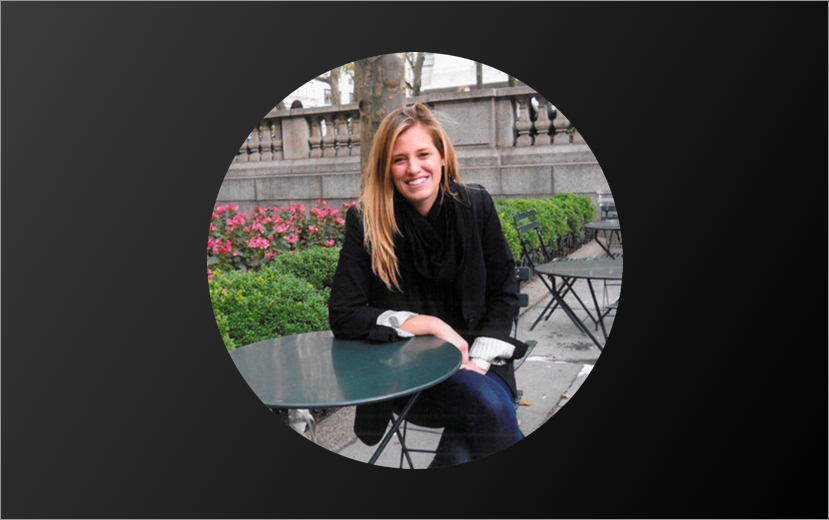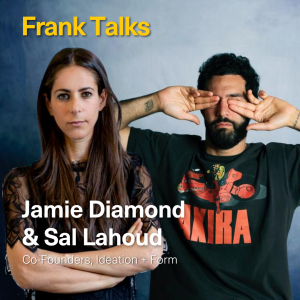Katherine Grube
This week we sit down with Katherine Grube, a lecturer at George Washington University who received her PhD from New York University. Katherine was a 2014 Fulbright Scholar at Peking University and the recipient of the 2013 Asia Art Archive-Robert HN Ho Family Foundation China Research Grant. Her research examines the contemporary art and visual culture of post-Mao China. Katherine holds a Master’s degree from the University of Sydney and a Bachelor’s degree from Stanford University. She has contributed to major exhibitions of Chinese contemporary art, including Zhang Peili: Record. Repeat at The Art Institute of Chicago and Art and China After 1989: Theater of the World at the Guggenheim Museum. From 2004 to 2009, she lived and worked in Beijing and returned to New York in 2011 as Assistant Producer for the documentary film, “Ai Weiwei: Never Sorry.” The film premiered at the 2012 Sundance Film Festival and was shortlisted for Best Documentary at the 2013 Academy Awards. Currently Katherine is editing a special issue of the Journal of Chinese Cinemas that will be published in 2019. Katherine’s experience is unique, specific and academic, and we are eager to share Katherine’s Frank Talk with you here – please enjoy!
What was your first job in the Arts?
My first job was at a contemporary art gallery in the 798 Art District in Beijing. Towards the end of a year-long intensive language program, I started knocking door-to-door at galleries in what was then Beijing’s up-and-coming contemporary art hub. I asked if spaces were hiring until I found one that was.
What was the most useful or important thing you learned at that job?
798 and the Chinese art world was pretty scrappy at that time, and a lot of the operational, administrative, and physical tasks of working in a gallery space fell to our small team of two. We wore a lot of different hats, and I learned not only the ins and outs of gallery management but also an array of practical skills related to running a gallery. It was a perfect first job. I was given an immense degree of autonomy and responsibility. At the same time, I was lucky to work with colleagues who believed in my potential and were also very patient with me as I learned to navigate a new professional environment. I’ll never forget that my first two days were spent wrestling with several life-sized fiberglass figures from the artist Zhang Dali’s series, Chinese Offspring series, as I prepared them for shipment, and collecting works from Zhang Xiaogang’s studio. It was surreal to move from a language classroom in Beijing’s western outskirts to an immense artist studio in the course of several days. The whole experience was really extraordinary and shaped my understanding of my own capabilities.
Tell us a little more about yourself. When did you realize you wanted to pursue a career in this industry?
I really love working with people who make things – objects, films, images, whatever.
Where are you from?
Outside of Chicago.
What is the arts community like there?
Chicago has a vibrant arts community, and I was really fortunate growing up to go to The Art Institute of Chicago and the Museum of Contemporary Art. Trips as a schoolgirl piqued my interested in the visual arts, but I really didn’t think of the arts as a professional path until I arrived in China in 2004.
What is the best piece of advice you can give about working in the art world?
I’ve been really fortunate to engage in the art world in numerous and varied ways; I worked on the commercial side as a gallery manager and, for a brief period, as an art consultant. For the past seven years, I’ve been engaged in the academic side of the art world, pursuing my own research but also contributing to large scale institutional shows at The Art Institute of Chicago and the Guggenheim Museum in New York. Prior to my starting my PhD, I also worked on the team that made the documentary, “Ai Weiwei: Never Sorry,” about the artist Ai Weiwei. I suppose my advice would be to embrace opportunities and experiences as they come your way and that there are many ways to engage in the art world. Be proactive and resourceful.
What is one of your greatest accomplishments in your career so far?
Completing a PhD.
What is something you do every day at work?
Coffee.
What do you think makes a person hirable?
Someone who is a team player, has a positive attitude, and is a creative problem solver.
What is your advice to making yourself stand out in your workplace?
Be proactive, polite, and hardworking, and express a genuine interest in art.
What is the best exhibition you have seen in the last year?
In DC, I’ve really enjoyed how the Renwick Gallery has reimagined its galleries and embarked on a program that emphasizes immersive environments. This was beautifully articulated in their recent show, “No Spectators: The Art of Burning Man,” but equally well in the 2017 installation, “Parallax Gap,” by the architectural design practice FreelandBuck. In New York, the Peter Hujar show at the Morgan Library was extremely satisfying, and I enjoyed the vivacious spunk of “One Hand Clapping” at the Guggenheim Museum.




